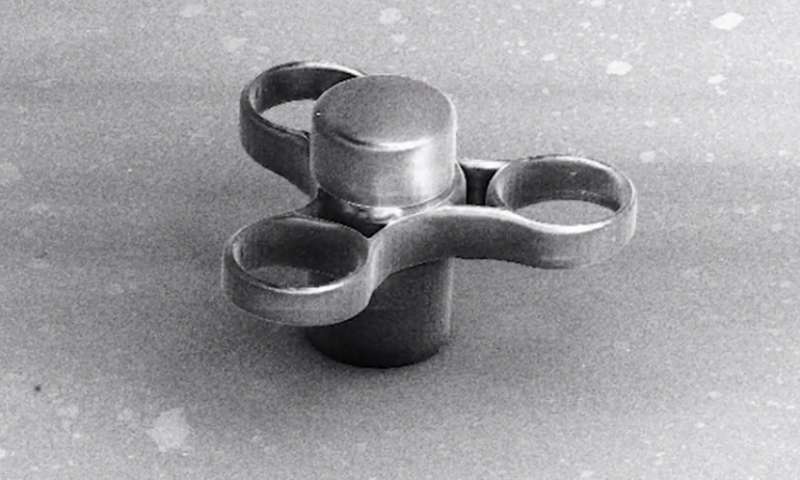The world’s smallest fidget spinner is invisible to the naked eye, and could fit easily in the width of a human hair. It was made by researchers at the Center for Nanophase Materials Sciences (CNMS) at Oak Ridge National Laboratory (ORNL) in Tennessee.
Though a novel application, the ability to 3D print at such a fine scale presents a dynamic possibility reaching much further than the fidget spinner craze from the first half of 2017 – from materials to medicine, and more.
The news also marks the second time fidget spinners have appeared on 3D Printing Industry.

A grain of inspiration
Oak Ridge hosts hundreds of research projects by scientists of all disciplines each year. In 2016, facilities at the CNMS were used by a total of over 650 researchers for purposes including the synthesis of nanomaterials and nanofabrication of minute objects.
The ORNL kit used to make the world’s smallest fidget spinner is a Photonic Professional GT lithography machine from Nanoscribe. Example cases applying the Photonic Professional GT include the fabrication of ‘microswimmers’ and tetrapod devices capable of precisely delivering drug doses for diseases including cancer.
Dr. Adam Rondinone, a senior staff scientist at ORNL’s CNMS, explains, “Our job is to offer cutting-edge experiments, instrumentation and expertise, to help other scientists to achieve their goals.”
Free cutting edge technology
The center accepts proposals from academics and private researchers on a biannual basis. Providing the results from approved projects is published with open access, the facilities are free to use, a feature ORNL is keen to highlight to more bright minds.
“We felt like it [the fidget spinner] would be an interesting demonstration for younger people who may not know that the federal government maintains these user facilities around the country,” adds Professor Rondinone.
“…We work with industrial partners to help them identify fundamental science questions that we can answer and then publish in open literature, without jeopardizing their intellectual property.”
Stay up to date with the latest 3D printing research – sign up to the 3D Printing Industry newsletter, follow us on Twitter, and like us on Facebook.
Get involved with 3D printing events near you here.
Featured image shows a moving gif of the world’s smallest fidget spinner. Clip via Oak Ridge National Laboratory on YouTube



